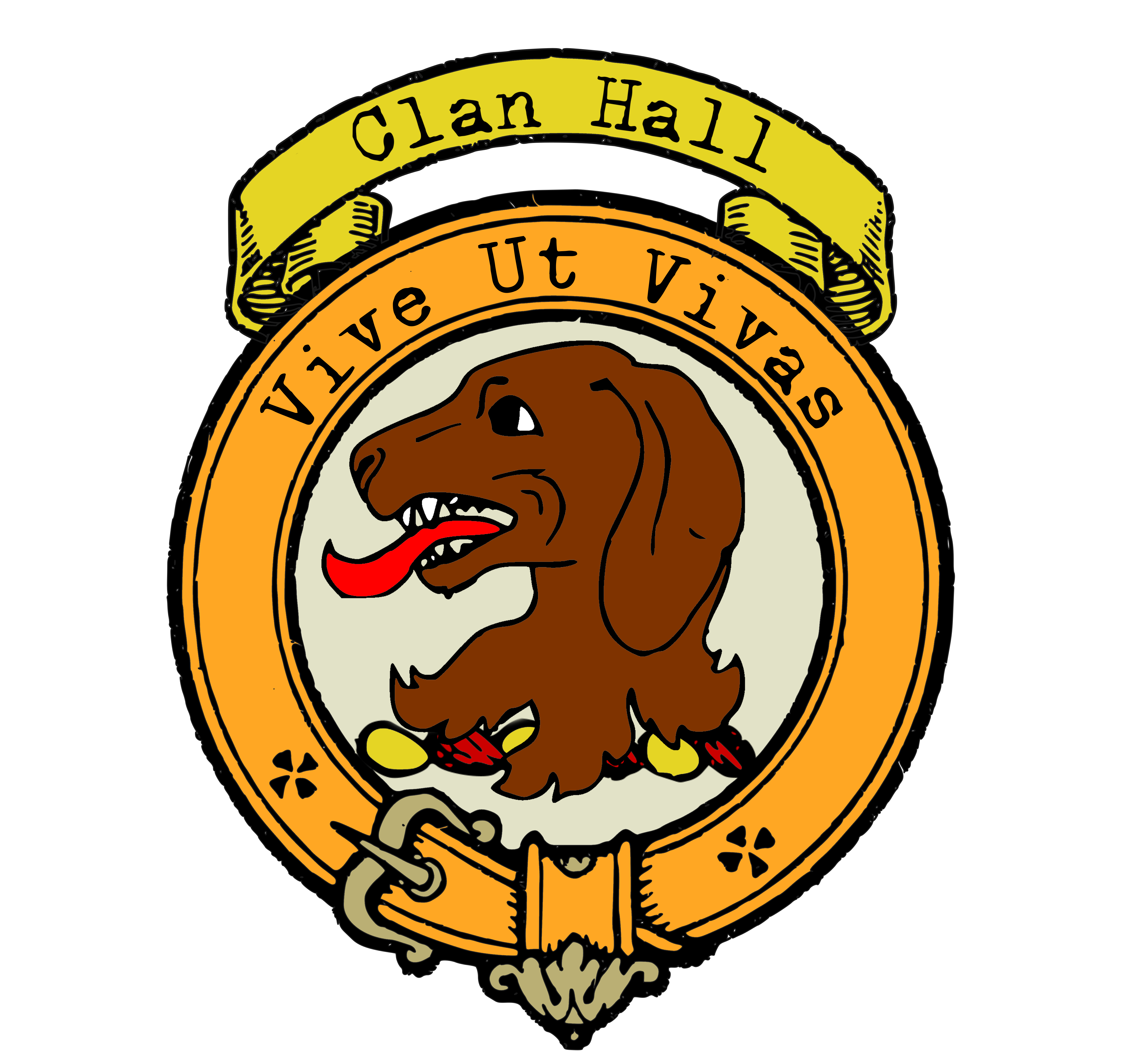Hall Clan
|
|
CREST: A Talbot MOTTO: Vive Ut Vivas TRANSLATION: Live that you may live |
| The Scottish Clan Hall is a fascinating part of Scottish history, with a rich and storied past. The Hall family, originally from Lincolnshire in England, were granted lands in Berwickshire by King David of Scotland in the 14th century, and thus began their journey in Scotland.
The Halls quickly became involved in the turbulent history of the Scottish Borders, where they became one of the 60 major riding families of the region. They were known for their involvement in reiving, or cattle rustling, and were often at odds with other border clans. This led to many violent conflicts, and the Halls were no strangers to the dangers of living on the Scottish Borders. One notable incident involved a complaint filed by Robert Spragon against two Halls who had rustled 120 sheep during a “Day of Truce.” The Halls’ traditional homes were in Redesdale in England, East Teviotdale, and Liddesdale in Scotland, and they also lived in other areas such as Aynstrother, Garvald, Irvide, Glasgow, and Perth. The Hall family also owned the Pele tower in Otterburn, which was famously involved in the Battle of Otterburn and the associated border ballad. The tower passed into the possession of the Hall family, and one notable member, “Mad Jack Hall,” was hung at Tyburn for his involvement in the Rebellion. By the 16th and 17th centuries, the Hall family had many branches in both England and Scotland. Notable members of the family at this time included Lord Llanover, Sir John Hall, Bishop Hall of Bristol, and Bishop Hall of Wearmouth. The family also continued to maintain seats at Skelton Castle in Yorkshire, Greatford Hall in Lincolnshire, and Gravell House in Middlesex. Today, the Hall family is still represented by Clan Hall, which is recognized by the Lord Lyon, the Scottish heraldic authority. The clan crest features a hand holding a serpent, and the motto is “Fide et Fortitudine,” meaning “By fidelity and fortitude.” While the clan may no longer be involved in the border conflicts of the past, their history and legacy continue to be an important part of Scottish history. |
|
Citations:
|
|

Purchase @ Redbubble
Purchase @ Amazon.com
Purchase @ Amazon.co.uk

